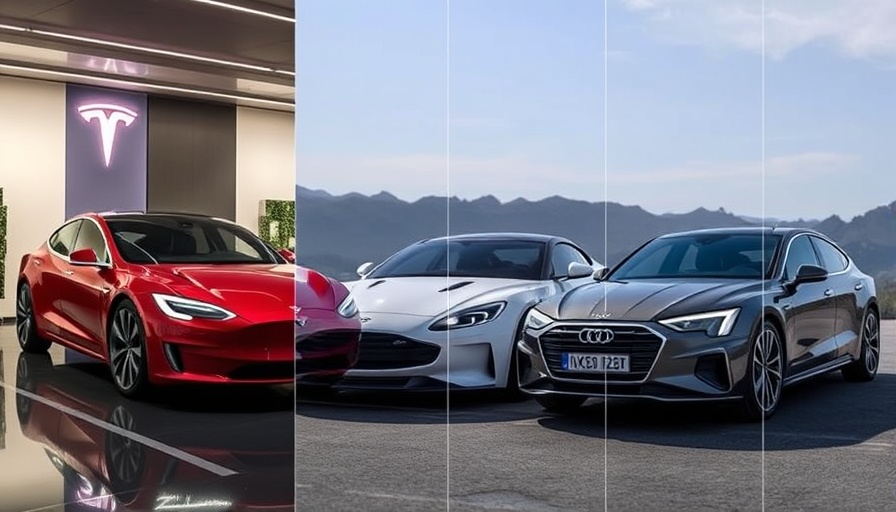
China's Electric Vehicle Market: A Brief Overview
As the world's largest automotive market, China consistently leads in the production and adoption of electric vehicles (EVs). In 2021, over 26 million vehicles sold were part of this burgeoning sector, solidifying China's status as an EV powerhouse. A confluence of government policies and aggressive innovations from local manufacturers, including Tesla, Ford, and Audi, has propelled this growth.
Tesla Model Y+: An Upgraded Range Awaits
Tesla's latest entrant, the Model Y+, represents a significant upgrade for the brand's offerings in China. With a regulatory filing indicating a range of up to 497 miles (approximately 349 EPA miles), this EV utilizes a new nickel cobalt manganese battery pack sourced from LG Energy Solution. This move not only enhances range but also reflects Tesla's ongoing commitment to meet the lofty expectations of the Chinese market. It positions this model to compete robustly with other luxury electric offerings available in the region
Ford's Unique Bronco Basecamp: A Camping Enthusiast's Dream
The Bronco Basecamp is Ford's intriguing addition to the Chinese EV landscape, emphasizing both adventure and practicality. Engineered alongside local partner Jianling, this model showcases Ford's ingenuity. With a pop-up roof feature and options for camping gear, it embodies a blend of utility and leisure. Specifically, the Basecamp offers a range of 404 miles in its electric variant and boasts features appealing to outdoor enthusiasts, setting it apart in the highly competitive market.
Audi E5 Sportback: Revival of the Wagon Form Factor
Audi's E5 Sportback emerges in a market increasingly skeptical of traditional wagons, yet its elegant design and 76 kWh battery system gain traction, particularly within China. The vehicle's focus on luxury aligns with another trend—Chinese consumers remain drawn to premium brands and sophisticated features. The E5's introduction at the Shanghai Motor Show speaks volumes about Audi's strategy to reclaim its footing in this niche market.
Future Predictions: The Next Wave of EVs in China
As manufacturers pivot toward more sustainable practices and enhanced technologies, it's anticipated that the competition among EVs will only intensify. Analysts predict that innovation in battery technology, particularly around range and efficiency, will be pivotal in shaping not just the products launched, but also the market dynamics. Chinese companies such as BYD and XPeng are set to emerge across global markets, showing that the country's electric ambitions have no borders.
Conclusion: Why Understanding This Shift Matters
For consumers and stakeholders globally, comprehending the rapid evolution of the electric vehicle industry, especially in China, is paramount. Keeping informed not only helps potential buyers make better decisions but prepares them for shifts in automotive technologies and marketplace dynamics. As companies like Tesla, Ford, and Audi innovate, they also lay the groundwork for a sustainable future.
 Add Row
Add Row  Add
Add 




Write A Comment